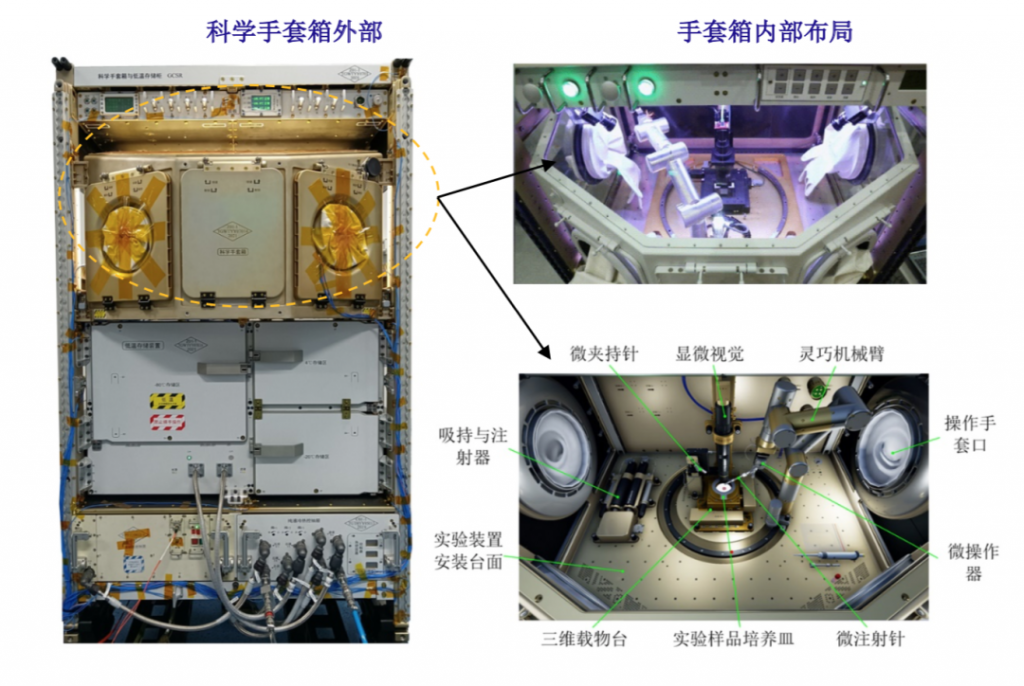Glove Box (Glove Box) is a kind of closed container for operating in dust-free and oxygen-free environment, which is usually used in research and industrial production in the fields of chemistry, biology and physics. Installing a robotic arm inside the Glove Box can fulfill several roles:
Automated operation: the robotic arm can automatically carry out complex operations under programmed control, improving experimental and production efficiency and reducing human labor.
Precise control: The high precision of the movement of the robotic arm can accomplish fine operation tasks, such as tiny assembly and precise sample addition.
Environmental isolation: Using the robotic arm inside the glove box can avoid the operator’s direct contact with harmful or environmentally sensitive substances, ensuring operational safety and material stability.

Continuous operation: The robotic arm can work 24 hours a day without interruption, improving productivity and experimental progress.
Reduction of pollution: In a dust-free and oxygen-free environment, the robotic arm can reduce the pollution caused by human operation and ensure the accuracy of the experiment and the quality of the product.
Operational flexibility: The robotic arm can be equipped with different types of end-effector (e.g., clamps, suction cups, etc.) to adapt to different operational needs.
Space saving: In some cases, the arm can be folded or moved to a position that does not affect the workspace, making the internal layout of the glove box more compact.
Remote control: In certain high-risk or restricted-access environments, the robotic arm can be operated remotely via an external control system to ensure personnel safety.
The use cases of robotic arms inside gloveboxes are very compelling, especially in the field of space science. Below are some specific application examples:
Space Station Scientific Glovebox: The scientific glovebox developed by the Shenyang Institute of Automation of the Chinese Academy of Sciences is used in space stations, such as the Qitian Experiment Module. This glove box is an enclosed facility that provides scientists with a 270-liter workspace surrounded by acrylic transparent windows and equipped with four glove ports, which can support two astronauts operating experiments or using the facility at the same time. The design of the glove box integrates the needs of life science, biotechnology, aerospace medicine, materials science and other disciplines. One of the robotic arm systems can perform micromanipulation with cellular-level precision, such as microinjection, microcutting and microextraction.
High-precision dexterous robotic arm: In the space station’s scientific glove box, the high-precision dexterous robotic arm has an operating precision of 5 microns and realizes visual servo functions based on high-precision visual feedback as well as AI intelligent algorithms. These functions provide a major technical guarantee for scientific research in the field of space life and ecology.
Micromanipulation and precision control: The robotic arms in the glove box can perform extremely fine operations, such as cell nucleus extraction and injection, with an operating precision of 5 microns. These robotic arms can replace the astronauts’ hands in performing experimental operations without ensuring that the astronauts do not touch the experimental devices, improving the precision and safety of the experiments.
These applications demonstrate the important role of robotic arms in the glove box, especially in scientific experiment environments that require high precision and automation. With these technologies, scientists are able to perform complex experimental operations in extreme environments such as space, while ensuring the accuracy and safety of their experiments.


























